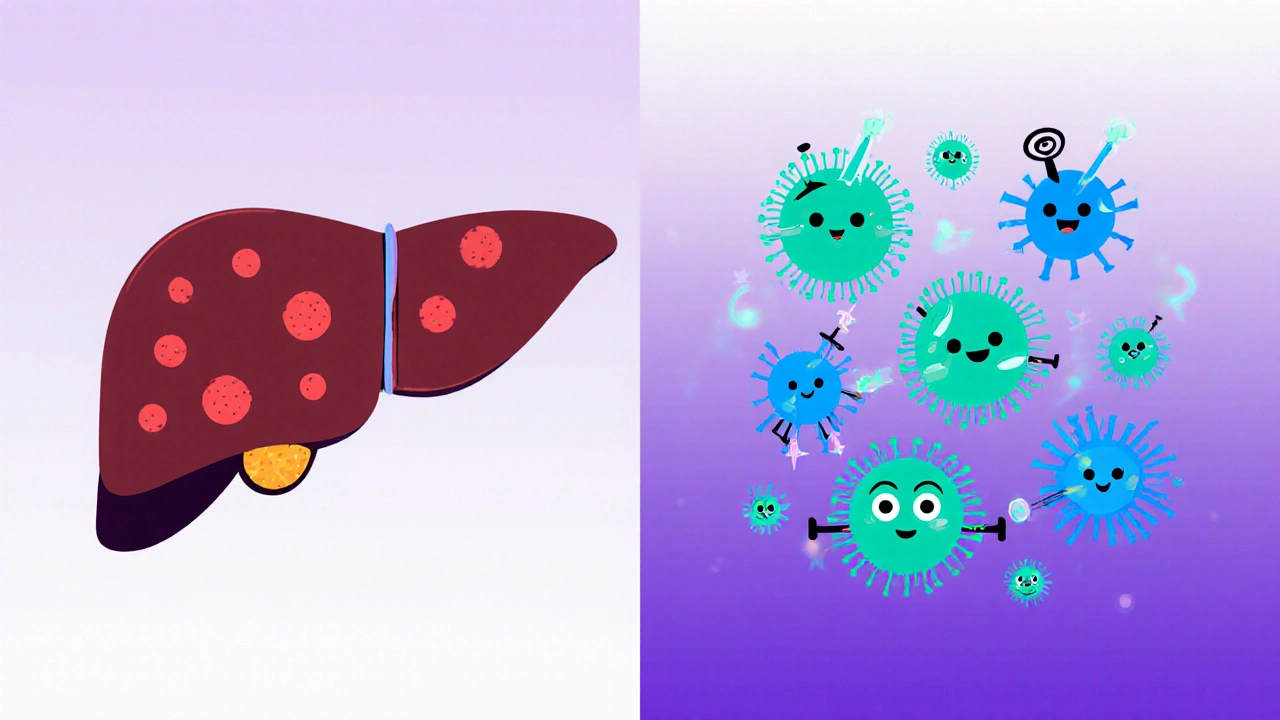Checkpoint Inhibitors: What They Are and Why They Matter
When working with checkpoint inhibitors, drugs that release the brakes on the immune system so it can recognize and destroy cancer cells. Also known as immune checkpoint blockers, they have become a cornerstone of modern oncology.
These agents belong to the broader field of cancer immunotherapy, treatments that harness the body’s own defenses to fight tumors. The most common targets are PD-1, a receptor on T cells that normally dampens immune activity and CTLA-4, another checkpoint protein that limits early T‑cell activation. By blocking these proteins, checkpoint inhibitors tip the balance toward an aggressive antitumor response.
How They Work, Who Uses Them, and Where They Fit
Checkpoint inhibitors require a functional immune system, so patients with severe immunosuppression may see limited benefit. They are most effective in cancers that display high mutational loads, such as melanoma, non‑small‑cell lung cancer, and certain bladder tumors. Ongoing clinical trials, studies that test safety and efficacy in new settings are expanding their use to kidney, breast, and even colorectal cancers.
Side‑effects differ from traditional chemotherapy. Instead of hair loss or nausea, patients may develop immune‑related adverse events like colitis, dermatitis, or thyroiditis. Managing these effects often involves steroids or other immunosuppressants, highlighting the need for close monitoring by oncology teams.
Choosing the right checkpoint inhibitor depends on the cancer type, expression of PD‑L1 or other biomarkers, and patient history. For instance, pembrolizumab targets PD‑1 and is approved for tumors with high PD‑L1 expression, while ipilimumab blocks CTLA‑4 and is frequently combined with a PD‑1 blocker to boost response rates.
The landscape keeps evolving. New agents targeting alternative checkpoints such as LAG‑3 and TIM‑3 are in late‑stage trials, promising to overcome resistance seen with current drugs. As research progresses, combination strategies with radiation, chemotherapy, or targeted therapies are also gaining traction.
Below you’ll find a curated set of articles that dive deeper into specific aspects of checkpoint inhibitors—ranging from side‑effect management and comparative drug guides to the latest trial outcomes and practical buying tips for related medications. Whether you’re a patient looking for clear information or a health professional needing a quick reference, the posts below cover the breadth of this fast‑moving field.

Liver Cancer & Immune System: How They Interact and Influence Treatment
Explore how liver cancer interacts with the immune system, why tumors evade defenses, and which immunotherapies are reshaping treatment options.
View More
Rhabdomyosarcoma & Immune System: Essential Facts
Learn how rhabdomyosarcoma interacts with the immune system, the latest immunotherapy options, and actionable steps for patients and families.
View More




